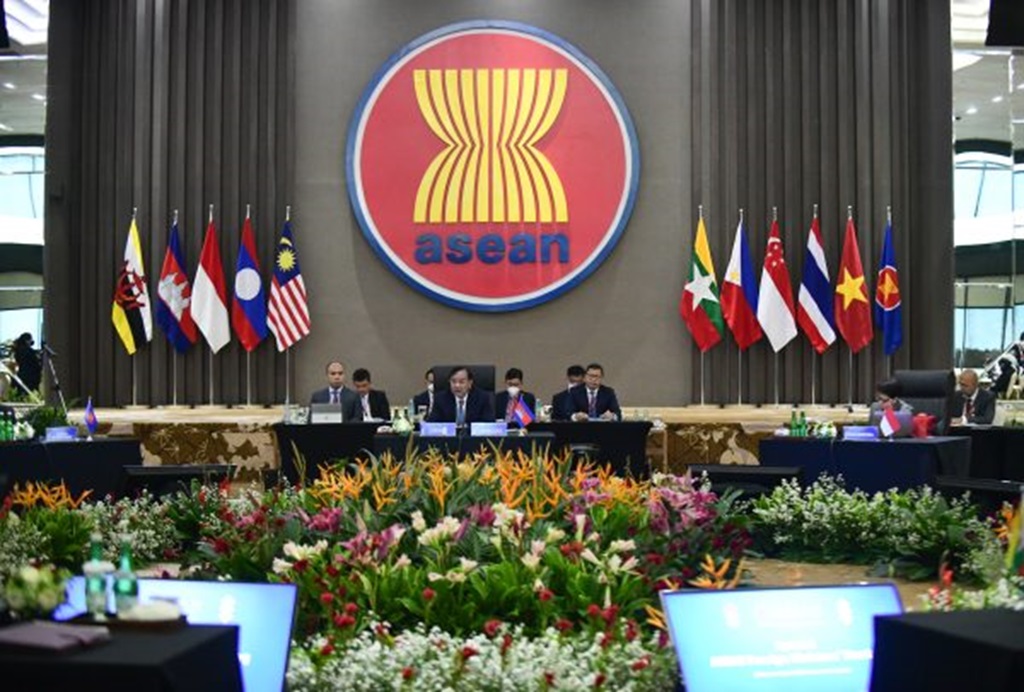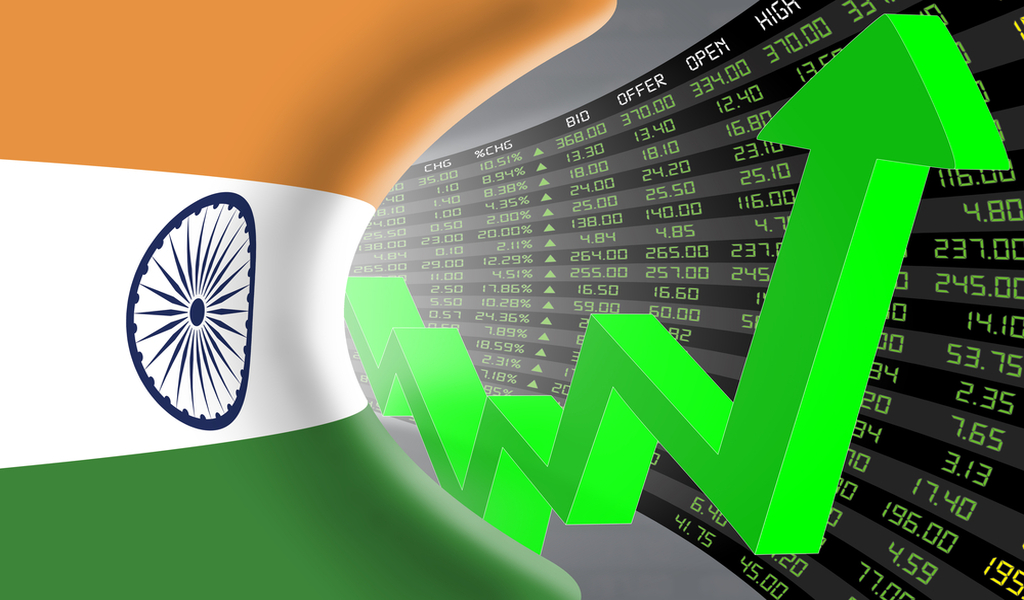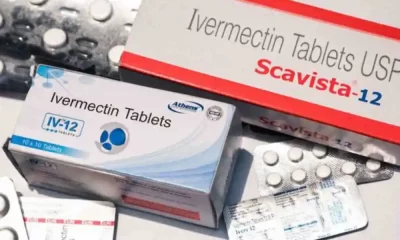ASEAN
Vietnam Struggling With Methamphetamine Epidemic with Drugs Coming from The Golden Triangle
HANOI – Although Vietnam has some of the world’s most stringent drug laws — those convicted of possessing or smuggling more than 600 grams of heroin or more than 2.5 kilograms of methamphetamine face death.
Vietnam has also been facing the existence of a key smuggling and trafficking hub for illegal drugs around the Golden Triangle, at the intersection of China, Laos, Thailand, and Myanmar. The Golden Triangle is the world’s second-largest drug producing region, and the effects are being felt in Vietnam.

A member of the United Wa State Army empties a packet of yaba pills before they are set on fire during a drug burning ceremony to mark the United Nations’s world anti-drugs day.
Methamphetamine Production Still on the Rise
According to the annual report from the United Nations Office on Drugs and Crime (UNDOC) issued in March 2019, the number of amphetamine-type stimulants (ATS) and new psychoactive substances (NPS) seized in East Asia and Southeast Asia in 2018 reached a record of 116 tons, an increase of 210 percent compared to five years ago. For another comparison, the amount seized in arrests in 2017 was 82 tons.
Based on the aggregate data of the Global SMART Program, ASEAN countries, along with China, Korea, and Japan, are seeing drug markets shift from heroin to ATS. In Vietnam, large quantities of methamphetamine perceived to have originated from the Golden Triangle have increasingly been smuggled and trafficked across Vietnam’s border to and from its neighbors, including Cambodia, China, and Laos.
Until last year, methamphetamine was mainly smuggled from supplies in Myanmar, through Chiang Mai and Bangkok in Thailand, then to Indonesia and Malaysia to reach consuming countries. Shipments were even transported to Australia, where law enforcement agencies seized 1.2 tonnes in Western Australia in December 2017 and 0.9 tonnes in April 2018 in Melbourne.
Although the Golden Triangle is no longer the primary source of opium for the whole world, after being replaced by Afghanistan in the early 21st century, this region became the world’s most active manufacturer and exporter of synthetic drugs, concentrated around Myanmar’s chaotic, conflict-filled border regions. When the Thai government’s fierce repression forced drug traffickers to change their shipping routes, supplies began moving from Myanmar toward Laos, Cambodia, and then through Vietnam.

Arrested ethnic H’mong couple Vu Chu Senh and his wife Mua Thi Do, with 489 packs of heroin they attempted to smuggle into Vietnam from Laos.
Vietnam is a Transport Hub
On March 25 in Hanoi, Vietnam’s Ministry of Public Security (MPS) held a press conference on the preliminary work of drug enforcement agencies (DEAs). According to data given at the press conference, in the first quarter of 2019 alone, law enforcement forces nationwide investigated 6,552 drug-related crimes and seized more than 6 tons of illegal drugs — more than the number of cases and quantities seized in all of 2018.
The risk of Vietnam becoming a drug transit hub not new. In my previous research centered on the Vietnam-Laos border, particularly at the triangle point in the northwestern area between Son La, Dien Bien, and Lai Chau, I found that DEAs in Vietnam face several challenges in responding to transnational drug trafficking from Golden Triangle markets. Most traffickers take advantage of difficult geographical, topographical, and climatic conditions across Vietnam’s other shared borders — with China in the north and Cambodia in the south – which provide many official as well as unofficial pathways to transport illegal drugs to and/or through Vietnam and beyond.
In 2014, in one of the biggest-ever drug cases in Quang Ninh province on the border with China, the anti-narcotics police forces of Vietnam cooperated with their Chinese counterparts to investigate and prosecute 89 suspects for trafficking over 12 tonnes of heroin. Thirty people were given the death penalty. The drug lord in Vietnam had colluded with Chinese and Laotian traffickers to make the four biggest networks across all three countries for transporting and trading illegal drugs between 2007-2012.
The problem continues today. In the first months of 2019, more than one ton of meth was seized after a five-month operation by law enforcement, with 300 kilograms of meth taken in Ho Chi Minh City (HCMC), 309 kg in Quang Binh, nearly 300 kg in Ha Tinh and more than 270 kg on the way to the Philippines.

Flows of methamphetamine tablet trafficking in the Mekong region from the Golden Triangle – Photo The Diplomat
This network was organized and led by a Chinese suspect, who had come to Vietnam under the legal pretext of operating the Hasan garment company registered in the name of his Vietnamese girlfriend. At that time, the DEAs arrested 16 Chinese, three Vietnamese, and one Laotian trafficker and is continuing its investigation and looking to track down more gang members.
This illegal drug trafficking and transporting route spanned from the Golden Triangle area (Myanmar) to Laos via Bo Y international border gate in Kon Tum province. After reaching Vietnam, part of the drugs headed to sea from Ho Chi Minh City’s Cat Lai port, bound for Manila.
Between April 12 and 17 2019, DEAs have continued to combat transnational drug trafficking across the Vietnam-Laos borders. In three cases during that period, law enforcement seized two tonnes of ATS and heroin, around 1,110 kg of methamphetamine, and just under a kilogram of ketamine in Ho Chi Minh City, plus over 1,300 kg of crystal meth and 100 blocks of heroin in Nghe An province.
All three drug smuggling operations used a similar modus operandi — camouflaging drugs in tea bags marked with the Daguanyin brand and then concealing them in barrel speakers – and were led by Taiwanese organizers acting with Vietnamese subordinates.
With DEAs fiercely combating drug trafficking along Vietnam’s borders with Laos and China in the northern and central northern region, drug lords have shifted toward southern routes. That’s why recently Ho Chi Minh City has emerged as a drug transit hub for Vietnam and beyond.
According to, General Minh, the deputy director of police, Ho Chi Minh City offers an attractive package for drug dealers: excellent transportation connections, weak foreign currency payment controls, and ineffective operations at port customs. The general highlighted that Hanoi does not have any seaports, making it a less attractive smuggling option.

About 300 kilograms (660 pounds) of methamphetamine seized in Ho Chi Minh City on March 20, 2019. – Photo Quoc Thang
Time for More Domestic Action and Regional Cooperation
Vietnam has already built up a national program and strategies to prevent, combat, and control drugs through 2030, focusing on three pillars – supply, demand, and harm reduction. Under this framework, community-based policing will be one of the most essential and central tasks to fight drug trafficking, with the priority being to prevent and control drug flows across Vietnam’s borders.
However, these illicit drug networks have proven quite adaptable at every step of stockpiling, transporting, and trading among countries. As a result, the limited efforts of a lone country such as Vietnam are ineffective. International cooperation should be strengthened, and regional countries need to fulfil their international commitments in combating international drug syndicates.
Both ATS and NPS are coming to all these countries, and, thanks to their readily available precursor ingredients, will become a significant obstacle to anti-drug efforts in the Greater Mekong subregion. In 2017, Vietnam’s MPS reported there were at least 223,000 drug addicts in the country, and about 1,600 people die of a drug overdose in Vietnam each year.
Many countries in the region have drug data, including Vietnam, but have forgotten to collect data on precursor trafficking. In fact, the precursors needed to make ATS and NPS are available in large numbers in the region because Asian countries, especially China and India, are the world’s chemical supply centers. In Vietnam, meanwhile, the precursors are not banned but are widely used in the pharmaceutical and chemical industries.
Every time a precursor is listed as a controlled substance by the United Nations, drug dealers always find new substances to create synthetic drugs. Therefore, countries need to coordinate closely and regularly update the list of banned chemicals. In Vietnam, over the last three years, hundreds of new types of ATS and NPS have been found, and the numbers are growing rapidly: from 292 types in 2015 to 559 types in 2017. Tracking the many variations of these drugs is necessary to understand precisely what precursors are being used.
Meanwhile, the borders between countries along the Mekong River remain weak and easy to overcome. Collaborative support among border patrols is still insufficient and needs to be strengthened. Since the October 2011 murder of 13 Chinese sailors traveling down the Mekong River, China has encouraged and cooperated with Laos, Myanmar, and
Thailand in the Joint Patrol Team; there have been 81 of these joint patrols as of April 2019. But paradoxically, although both Cambodia and Vietnam are at the end of the Mekong River, they are still not involved directly in this program. Here again regional cooperation needs a boost to truly combat the drug smuggling routes.
By Dr. Hai Thanh Luong
This Article First Posted at The Diplomat
 Dr. Hai Thanh Luong is an Honorary Principal Research Fellow at the School of Global, Urban, and Social Studies, RMIT University, Australia. His recent book to investigate transnational narcotics trafficking across the Vietnam-Laos border has published by Palgrave MacMillan (2019).
Dr. Hai Thanh Luong is an Honorary Principal Research Fellow at the School of Global, Urban, and Social Studies, RMIT University, Australia. His recent book to investigate transnational narcotics trafficking across the Vietnam-Laos border has published by Palgrave MacMillan (2019).
Dr Hai graduated of Counter Drug Tactical Training Course 2007 (Drugs Enforcement American and Joint American Task Force) and Interrogation Techniques Based on Presumption of Innocence (Norway’s Detective Police), and Asia- Pacific Region Law Enforcement Management Program (Australia Federal Police)

ASEAN
Thailand Touts Peace Plan With ASEAN Partners for Myanmar

Thailand has urged that three or more ASEAN member countries collaborate to engage with Myanmar’s military regime in order to alleviate the crisis and bring peace to the conflict-torn country, while keeping steadfast in its commitment to humanitarian aid and peace promotion.
Foreign Affairs Ministry spokesman Nikorndej Balankura said on Wednesday that Thailand had coordinated with Laos, the current Asean chair, to arrange what it terms Asean “Troika” and “Troika plus” talks to restore peace in Myanmar.
The Asean Troika is a community of foreign ministers from the bloc’s previous, current, and prospective chair countries [Indonesia, Laos, and Malaysia]. The term “plus” refers to other Asean members who are interested in promoting peace or concerned about the problem.
Mr Nikorndej stated that the proposed meetings are most likely to take place in Thailand and restated the country’s willingness to mediate negotiations between Myanmar’s junta and resistance organizations.
He stated that the ongoing violence is not between Thailand and Myanmar, and that the Thai government will provide humanitarian assistance to all groups affected by the fighting in accordance with national security, international relations, and human rights standards.
He emphasized that the crisis impacts all countries, including Thailand, which shares a border with Myanmar.
“Thailand is a peace advocate, thus we must stress our role as an active promoter of peace. This is evident in our willingness to mediate negotiations between Myanmar’s conflicting parties. “If they agree, we’re ready,” he stated.
Border Trade Resumes
According to Mr Nikorndej, because the majority of the refugees have returned to Myanmar, the situation is not considered severe, and the consequences on Thailand are limited, affecting border trade only temporarily.
The government committee overseeing the situation along the Thai-Myanmar border, chaired by Deputy Prime Minister and Foreign Minister Parnpree Bahiddha-Nukara, is considering forming sub-committees with the National Security Council (NSC) to make the selections.
He highlighted that the situation along the Thai-Myanmar border has improved over the last 48 hours, with no reports of firing from locals. However, the committee will keep an eye on the situation, which is fluid.
During Mr Parnpree’s visit to Tak’s Mae Sot area on Tuesday afternoon, he stated that there has been no fighting at the 2nd Thailand-Myanmar Friendship Bridge since Sunday, and the majority of the refugees who left the fighting over the weekend have since returned.
He stated that the most important thing is that Thai residents be reassured that the government is taking steps to alleviate the effects of the Myanmar conflict on their livelihoods.
“Our agencies have response plans and people can rest assured that we are giving top priority to their safety,” he went on to say. When asked when the Mae Sot checks will reopen, he said they are expected to do so soon because both sides in Myanmar understand the importance of the 2nd Thai-Myanmar Friendship Bridge as a crucial border commerce route.
Residents Return to Myanmar
Meanwhile, the final group of 658 Myanmar refugees who sought safety in Mae Sot on Wednesday voluntarily chose to return once the situation in Myawaddy eased, according to local officials.
They were provided needs, such as medicines, before crossing the Moei River back to Myawaddy. Local officials and charity workers escorted them away.
According to the most recent reports, the checkpoint at the 1st Thai-Myanmar Friendship Bridge reopened on Wednesday, and junta troops who had fled to the 2nd Thai-Myanmar Friendship Bridge had returned to their barracks at the 275th Infantry Battalion.
On Wednesday, Reuters reported that a Myanmar rebel force has evacuated from Myawaddy following a military counteroffensive.
According to a spokesman for the Karen National Union (KNU), the “temporary retreat” from the town of Myawaddy occurred after junta soldiers returned to the crucial strategic location, which serves as a conduit for more than $1 billion in yearly foreign trade.
ASEAN’s Influence Over Myanmar
ASEAN, or the Association of Southeast Asian Nations, is a regional intergovernmental organization made up of ten Southeast Asian countries. Founded in 1967, its mission is to foster economic, political, and social cooperation among its members. These countries are Brunei, Cambodia, Indonesia, Laos, Malaysia, Myanmar, the Philippines, Singapore, Thailand, and Vietnam.
ASEAN plays an important influence in the area. It promotes economic integration through initiatives such as the ASEAN Economic Community, which improve trade and investment flows. The group also addresses security, climate change, and human rights. It has tried to create a single market, promote sustainable growth, and deepen ties with its international partners.
Despite obstacles such as managing divergent interests, ASEAN remains influential. Its combined market of approximately 650 million people, as well as its strategic location between India and China, lend it economic weight. The group’s goal is to maintain regional stability while furthering its members’ common interests on the global stage.
ASEAN
Thailand Touts Peace Plan With ASEAN Partners for Myanmar

Thailand has urged that three or more ASEAN member countries collaborate to engage with Myanmar’s military regime in order to alleviate the crisis and bring peace to the conflict-torn country, while keeping steadfast in its commitment to humanitarian aid and peace promotion.
Foreign Affairs Ministry spokesman Nikorndej Balankura said on Wednesday that Thailand had coordinated with Laos, the current Asean chair, to arrange what it terms Asean “Troika” and “Troika plus” talks to restore peace in Myanmar.
The Asean Troika is a community of foreign ministers from the bloc’s previous, current, and prospective chair countries [Indonesia, Laos, and Malaysia]. The term “plus” refers to other Asean members who are interested in promoting peace or concerned about the problem.
Mr Nikorndej stated that the proposed meetings are most likely to take place in Thailand and restated the country’s willingness to mediate negotiations between Myanmar’s junta and resistance organizations.
He stated that the ongoing violence is not between Thailand and Myanmar, and that the Thai government will provide humanitarian assistance to all groups affected by the fighting in accordance with national security, international relations, and human rights standards.
He emphasized that the crisis impacts all countries, including Thailand, which shares a border with Myanmar.
“Thailand is a peace advocate, thus we must stress our role as an active promoter of peace. This is evident in our willingness to mediate negotiations between Myanmar’s conflicting parties. “If they agree, we’re ready,” he stated.
Border Trade Resumes
According to Mr Nikorndej, because the majority of the refugees have returned to Myanmar, the situation is not considered severe, and the consequences on Thailand are limited, affecting border trade only temporarily.
The government committee overseeing the situation along the Thai-Myanmar border, chaired by Deputy Prime Minister and Foreign Minister Parnpree Bahiddha-Nukara, is considering forming sub-committees with the National Security Council (NSC) to make the selections.
He highlighted that the situation along the Thai-Myanmar border has improved over the last 48 hours, with no reports of firing from locals. However, the committee will keep an eye on the situation, which is fluid.
During Mr Parnpree’s visit to Tak’s Mae Sot area on Tuesday afternoon, he stated that there has been no fighting at the 2nd Thailand-Myanmar Friendship Bridge since Sunday, and the majority of the refugees who left the fighting over the weekend have since returned.
He stated that the most important thing is that Thai residents be reassured that the government is taking steps to alleviate the effects of the Myanmar conflict on their livelihoods.
“Our agencies have response plans and people can rest assured that we are giving top priority to their safety,” he went on to say. When asked when the Mae Sot checks will reopen, he said they are expected to do so soon because both sides in Myanmar understand the importance of the 2nd Thai-Myanmar Friendship Bridge as a crucial border commerce route.
Residents Return to Myanmar
Meanwhile, the final group of 658 Myanmar refugees who sought safety in Mae Sot on Wednesday voluntarily chose to return once the situation in Myawaddy eased, according to local officials.
They were provided needs, such as medicines, before crossing the Moei River back to Myawaddy. Local officials and charity workers escorted them away.
According to the most recent reports, the checkpoint at the 1st Thai-Myanmar Friendship Bridge reopened on Wednesday, and junta troops who had fled to the 2nd Thai-Myanmar Friendship Bridge had returned to their barracks at the 275th Infantry Battalion.
On Wednesday, Reuters reported that a Myanmar rebel force has evacuated from Myawaddy following a military counteroffensive.
According to a spokesman for the Karen National Union (KNU), the “temporary retreat” from the town of Myawaddy occurred after junta soldiers returned to the crucial strategic location, which serves as a conduit for more than $1 billion in yearly foreign trade.
ASEAN’s Influence Over Myanmar
ASEAN, or the Association of Southeast Asian Nations, is a regional intergovernmental organization made up of ten Southeast Asian countries. Founded in 1967, its mission is to foster economic, political, and social cooperation among its members. These countries are Brunei, Cambodia, Indonesia, Laos, Malaysia, Myanmar, the Philippines, Singapore, Thailand, and Vietnam.
ASEAN plays an important influence in the area. It promotes economic integration through initiatives such as the ASEAN Economic Community, which improve trade and investment flows. The group also addresses security, climate change, and human rights. It has tried to create a single market, promote sustainable growth, and deepen ties with its international partners.
Despite obstacles such as managing divergent interests, ASEAN remains influential. Its combined market of approximately 650 million people, as well as its strategic location between India and China, lend it economic weight. The group’s goal is to maintain regional stability while furthering its members’ common interests on the global stage.
ASEAN
7 key things Changed for Indian Stock market Overnight – Gift Nifty, tech stocks rally to oil prices

(CTN News) – Indian stock market: The domestic equity market is projected to open lower on Tuesday, mirroring mixed global market cues ahead of global central banks’ monetary policy meetings.
Asian markets fell as US stock indices closed higher overnight, boosted by mega-cap growth stocks.
For additional interest rate clues, market investors will look to the Bank of Japan’s monetary policy choices later today and the US Federal Reserve’s policy this week. On Monday, the Indian stock market indices finished the turbulent day higher, powered by key metals and auto giants.
The Sensex rose 104.99 points, or 0.14%, to close at 72,748.42, while the Nifty 50 advanced 32.35 points, or 0.15%, to 22,055.70. “We expect the markets to consolidate in the coming days, while the broader market may remain subdued,” said Siddhartha Khemka, Head of Retail Research at Motilal Oswal Financial Services Ltd.
Here are significant worldwide market indications for the Sensex today:
Asian marketplaces
Asian markets fell on Tuesday ahead of the Bank of Japan’s monetary policy decision. After 17 years of negative interest rate policy, the Bank of Japan will likely cease it.
Japan’s Nikkei 225 lost 0.5% at the outset, while the Topix remained steady. South Korea’s Kospi fell 0.8%, while the Kosdaq dropped 0.4%. Hong Kong’s Hang Seng index futures showed a dismal start.
Gift Nifty Today
Today, the Gift Nifty was trading at 22,060, a markdown of nearly 70 points from the previous close of the Nifty futures. This indicates a gap-down start for Indian stock market indices.
US stock market indices closed higher on Monday, powered by mega cap growth stocks, as investors awaited the Federal Reserve’s policy meeting this week.
The Dow Jones Industrial Average rose 75.66 points, or 0.20%, to 38,790.43, while the S&P 500 increased 32.33 points, or 0.63%, to 5,149.42. The Nasdaq Composite closed 130.27 points, or 0.82% higher, at 16,103.45.
Tesla shares rose 6.3%, while Nvidia shares rose 0.7%. Xpeng’s US-listed shares rose 1.9%, Boeing’s stock price fell 1.5% and Super Micro Computer’s stock dropped 6.4%.
On Monday, technology megacap stocks in the US soared, with the Nasdaq 100 gaining about 1% and the ‘Magnificent Seven’ tech megacaps rising twice as much.
Google’s parent Alphabet shares rose 4.4% after Bloomberg News reported that Apple Inc. is discussing incorporating Google’s Gemini artificial intelligence engine inside the iPhone. Apple shares rose 0.6%.
Nvidia’s stock price jumped 0.7% after CEO Jensen Huang unveiled new chips to extend the company’s supremacy in AI computing. Tesla shares rose 6.3% after the electric carmaker announced that it would shortly raise the price of its Model Y EVs in areas of Europe.
Indian stock market Oil Prices:
Crude oil prices rose further following Ukrainian drone assaults on Russian refineries and OPEC supply cutbacks. Brent crude, the global standard, rose 0.06% to $86.94 per barrel after rallying 1.8% on Monday to its highest closing since late October. West Texas Intermediate was trading 0.06% higher at $82.77.
Bank of Japan
The Bank of Japan is anticipated to abandon its eight-year negative interest rate policy on Tuesday and raise interest rates for the first time in 17 years. If the nine-member board deems the conditions are right, the BOJ will set the overnight call rate as its new objective and guide it in a range of 0-0.1% by paying 0.1% interest on excess reserves held by financial institutions at the central bank, according to Reuters.
Japan’s 10-year government bond rate increased by one basis point (bp) to 0.765%, while the two-year yield increased by one bp to 0.19%.
US Treasury Yields
The benchmark US 10-year Treasury yields rose to three-week highs on Monday, ahead of the Federal Reserve’s meeting this week. The yield on 10-year notes reached 4.348%, up nearly 5 basis points on the day and the highest since February 23. According to Reuters, two-year yields rose to 4.751%, the highest level since February 23. The yield curve inversion between two-year and ten-year notes narrowed by 2 basis points to minus 40.
Related CTN News:
-

 News4 years ago
News4 years agoLet’s Know About Ultra High Net Worth Individual
-
Entertainment2 years ago
Mabelle Prior: The Voice of Hope, Resilience, and Diversity Inspiring Generations
-

 Health4 years ago
Health4 years agoHow Much Ivermectin Should You Take?
-

 Tech2 years ago
Tech2 years agoTop Forex Brokers of 2023: Reviews and Analysis for Successful Trading
-

 Lifestyles3 years ago
Lifestyles3 years agoAries Soulmate Signs
-

 Movies2 years ago
Movies2 years agoWhat Should I Do If Disney Plus Keeps Logging Me Out of TV?
-

 Health3 years ago
Health3 years agoCan I Buy Ivermectin Without A Prescription in the USA?
-

 Learning3 years ago
Learning3 years agoVirtual Numbers: What Are They For?